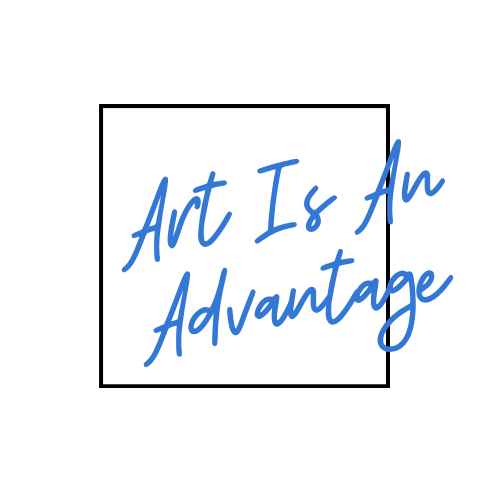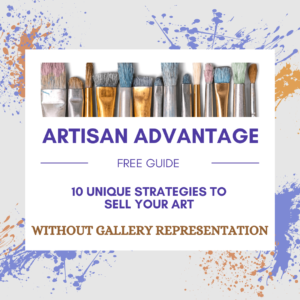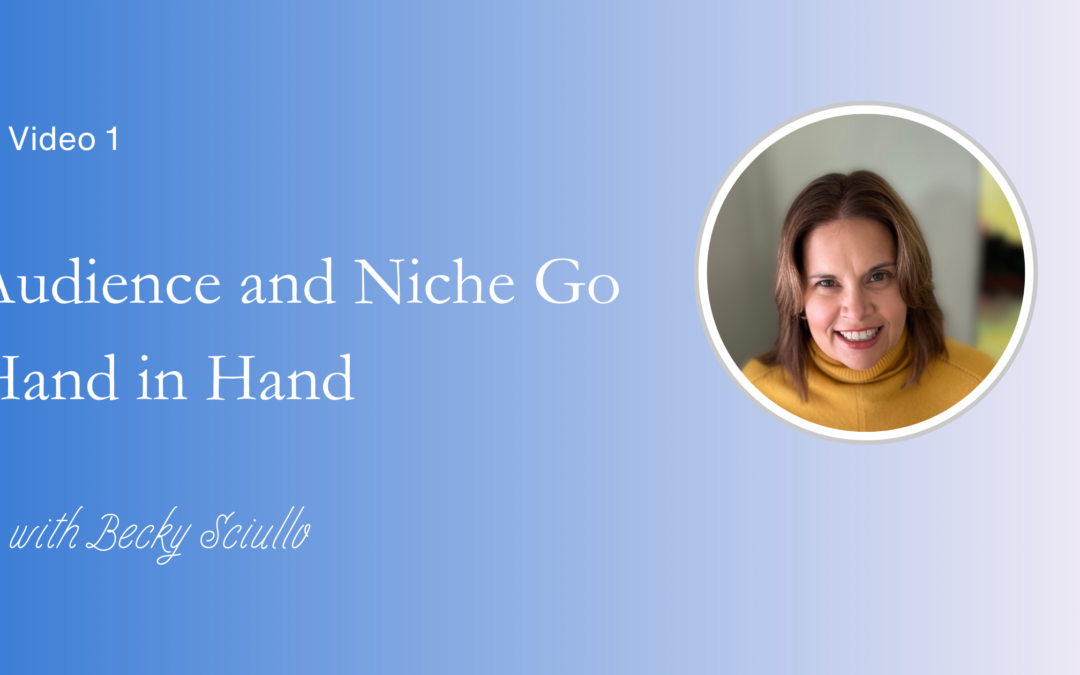
by Rebecca Sciullo | Mar 7, 2024 | Audience
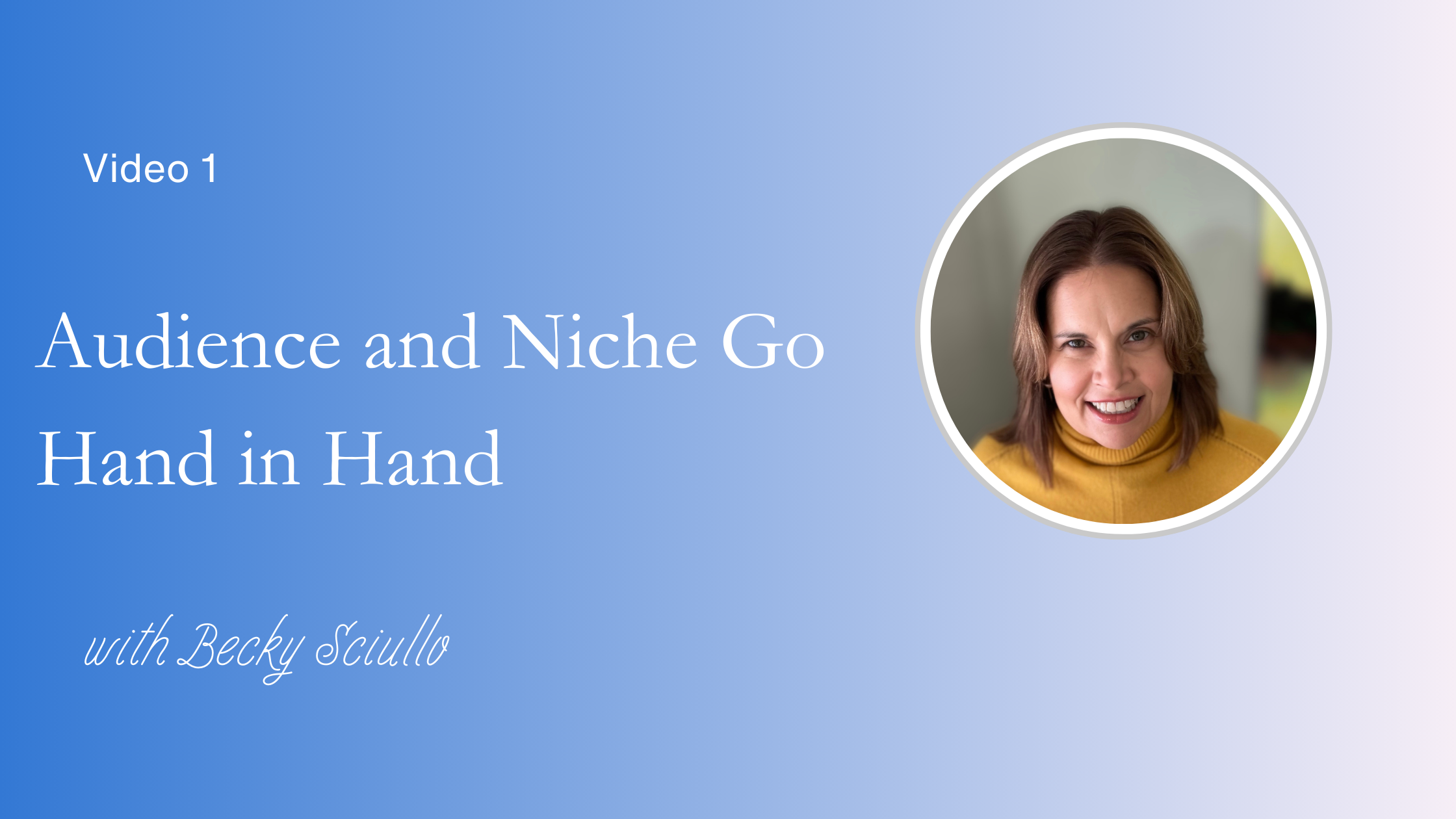
This first weekly video explores the terms niche and audience and how they work together. Then, we discuss first thoughts on identifying your niche audience. It starts with discovering your unique artistic voice and understanding what sets your work apart. You’ll uncover valuable insights into your niche audience’s preferences by paying attention to who’s drawn to your art and why.

Links mentioned in the Video:
Get the free Guide: 7 Steps to Market Your Art to a Niche
Get weekly updates so you never miss a video.
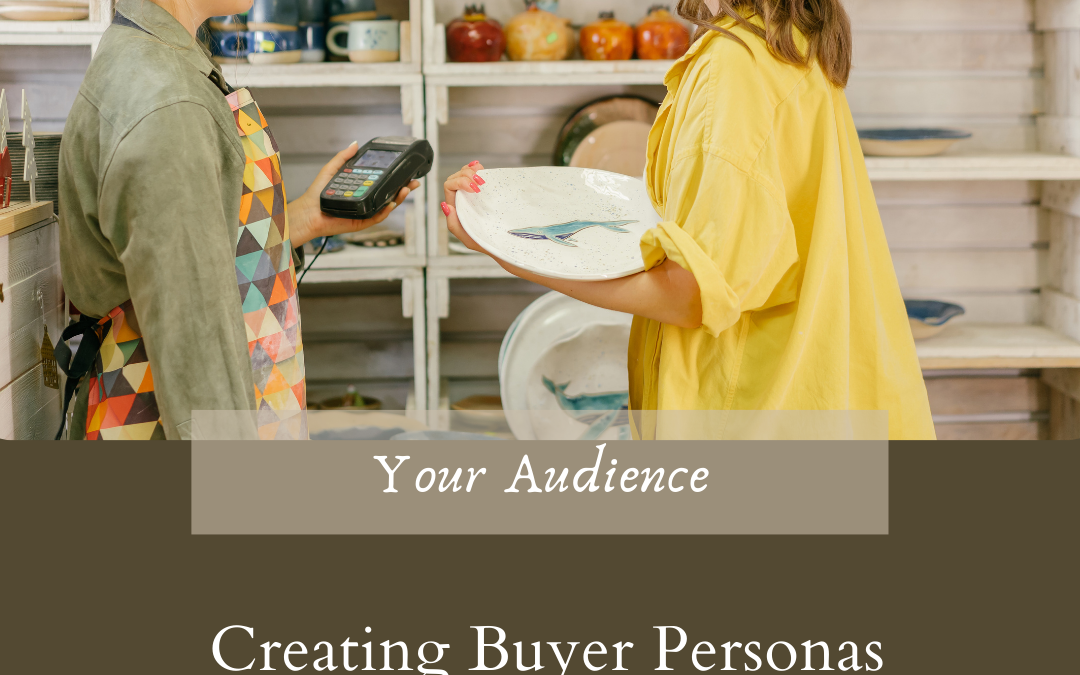
by Rebecca Sciullo | Jan 24, 2024 | Audience
A Guide to Creating and Using Buyer Personas for Visual Artists
Last week, we discussed the concept of a target audience and why it’s important to understand who this audience is for your art business. One tool for helping with this understanding is creating and using buyer personas.
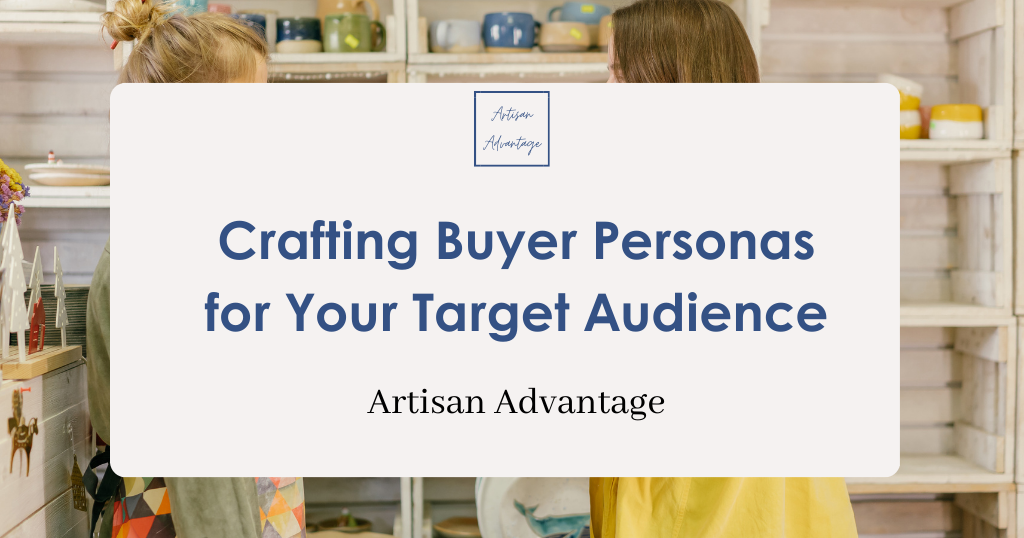
What are Buyer Personas?
Buyer or customer personas are detailed representations of your ideal audience segments. They include demographics, interests, preferences, and behaviors, providing a comprehensive view of who your art is resonating with.
How Can Artists Use Buyer Personas?
By crafting buyer personas, artists gain insights into their audience’s motivations, enabling them to tailor their marketing for maximum impact. This targeted approach increases the likelihood of connecting with potential buyers.
Steps to Creating Buyer Personas
1 – Gathering Information
You can use social media analytics, social conversation, and real-life conversation to collect data on your audience. Also, you could use surveys and interviews if you have a substantial email list or social media following.
2 – Building Detailed Personas
Create fictional characters that represent distinct segments of your audience. Include details such as age, interests, and buying behaviors. Companies often give their characters actual names for these personas, and you could do the same.
3 – Common Mistakes to Avoid
Be cautious of generalizations and assumptions. Make sure your personas are based on accurate data to avoid misunderstanding your audience.
Applying Buyer Personas to Your Art Business
Marketing Strategies
Use buyer personas to craft targeted marketing campaigns. Tailor your promotional content to connect with the interests and values of your personas.
Building Relationships
Engage with your audience based on these insights. Foster a sense of community through social media and collaborations.
Evolving Personas Over Time
Be Open to Change
Recognize shifts in your audience’s preferences and adapt your personas accordingly.
Some Examples of Using Buyer Personas
Here are a few hypothetical examples illustrating how visual artists might leverage buyer personas to enhance their artistic practice and connect with their audience:
Nature Photography
A nature photographer strategically targets nature enthusiasts and eco-conscious individuals who value sustainability. The artist initiates a captivating series highlighting the beauty of endangered species and natural landscapes, emphasizing using eco-friendly materials in art prints and packaging. This commitment resonates positively with the buyer persona, turning the art into a conversation piece and attracting buyers who share the artist’s passion for nature conservation. The photographer’s thoughtful approach aligns with the audience’s values and increases engagement and sales within the community the artist aims to connect with.
Abstract Art
An abstract painter successfully tailors art to a specific audience—young professionals who appreciate modern aesthetics and minimalist design. Creating a series of abstract paintings characterized by clean lines and muted colors, the artist strategically showcases work on social media platforms popular among the target demographic. The artwork connects with the intended buyers and results in heightened engagement, increased sales, and an invitation to exhibit at galleries that align perfectly with the audience’s preferences.
Comic Book Illustrator
A comic book illustrator successfully caters to a target audience of comic book enthusiasts and pop culture fans. The artist engages actively with his audience by creating a series inspired by popular comic book characters and hosting virtual events where the artist live-draws fan-requested characters. Additionally, presence in online forums dedicated to comic book culture further strengthens the connection. This interactive approach resonates with fans, who appreciate the personalized touch, resulting in a notable increase in sales of artwork and merchandise.
Jewelry Artist
A jewelry artist strategically targets individuals who appreciate handcrafted, unique jewelry with a focus on sustainability. The buyer persona encompasses eco-conscious consumers valuing ethically sourced materials and timeless designs. Crafting a collection using recycled metals and ethically sourced gemstones, the jeweler’s designs are showcased on platforms emphasizing craftsmanship and eco-friendly values. The result is a strong resonance with the audience, leading to increased sales through online platforms and eco-friendly boutiques. As a result, the artist’s commitment to sustainability positions them as a sought-after jewelry artist, celebrated for ethical practices and unique creations.
These examples highlight how understanding buyer personas can guide artists in tailoring their content, engaging with their audience, and ultimately building a more meaningful and lucrative artistic career.
Continuous Research and Feedback:
It’s important to conduct research and seek feedback from your audience regularly. Then, use this information to refine and update your personas as needed.
Creating and using buyer personas helps visual artists bridge the gap between creativity and commercial success. By understanding their audience deeper, artists can create impactful artwork, connect with buyers, and evolve with the ever-changing marketplace.
Get More Information For Your Art Business
Woud you like weekly information like this delivered to your email inbox? Join the Artisan Advantage Weekly Information Drop here.

by Rebecca Sciullo | Jan 17, 2024 | Audience
Leverage the Knowledge of Your Target Audience
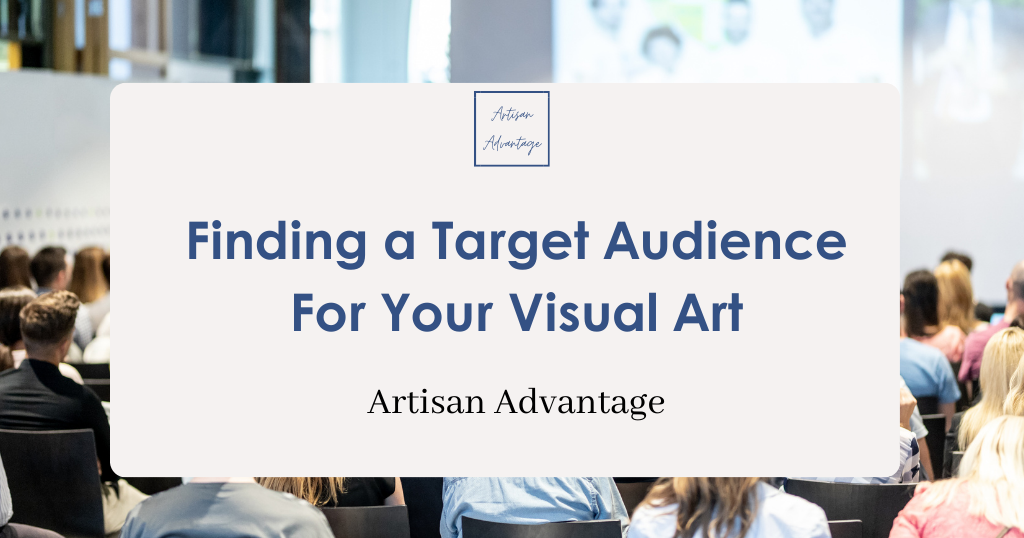
Knowing your target audience can make a significant difference in your visual art business. It’s like having a secret tool to take you from sharing and marketing work sporadically to building a strategic business.
This post is the first in a series focused on finding your audience.
First, we’ll cover what a target audience is and how visual artists can use this concept to make their marketing strategies even better.
Defining Your Target Audience
Simply put, a target audience is the specific group you aim to reach with your artwork. This group shares common characteristics, interests, and preferences, making them more likely to appreciate and engage with your work. It’s possible to have more than one target audience, and identifying these groups involves some research and strategy.
Why is Your Audience Important?
Focused Marketing Efforts
Knowing your target audience allows you to tailor your marketing efforts more precisely. Instead of casting a wide net and hoping to attract anyone and everyone, you can focus on the individuals most likely to resonate with your art. This not only saves resources but also increases the effectiveness of your promotional campaigns.
Improved Artistic Presentation
Understanding your audience’s preferences helps you make informed decisions about who you present your work to and how you do that. For example, if you’re participating in an arts festival and understand who in your target audience is likely to attend, it will help you determine the type of work you include in that show.
Building Meaningful Connections
Art is a personal experience; forming connections with your audience is the first step in helping them to purchase or choose your work. When your art speaks directly to the interests and emotions of your target audience, it becomes more than just a visual representation – it becomes a shared experience, forging a stronger bond between artist and viewer.
How to Figure Out Your Target Audience
Conduct Research
You can research the audience in several ways, some of which we will tackle in later posts. If you’ve already been selling work, look at the demographics, interests, and everything you know about your current audience. This data serves as the foundation for creating a detailed profile of your audience. If you’re new to marketing, think about your work and who might be interested. When I started working for Robert Yonke, all I knew was that he painted images of bluegrass musicians. Doing some research quickly led me to the world of Bluegrass music, which became an excellent audience for his work.
Create Customer Personas
Develop customer or buyer personas based on your research. These are fictional representations of your ideal viewers, complete with names, backgrounds, and preferences. By humanizing your target audience, you can better understand their needs and tailor your communication and marketing approach accordingly.
How to Use This Knowledge
Craft Strategic Marketing Messages
Develop marketing messages that resonate with your target audience. Speak directly to their interests, aspirations, and emotions. Whether through social media, email campaigns, or promotional events, ensure that your messaging aligns with the values of your ideal viewers.
Utilize Targeted Platforms
Identify the platforms where your target audience is most active. Whether it’s social media, art galleries, or specific online communities, focus your marketing efforts on these channels to reach your audience more effectively.
Understanding and leveraging the concept of a target audience is a cornerstone of successful marketing for visual artists. Use your research insights to inform your business decisions. Then, align your efforts with the preferences of your target audience to maximize appeal.
Would you like weekly art marking tips sent to your inbox? Join my weekly information drop here.
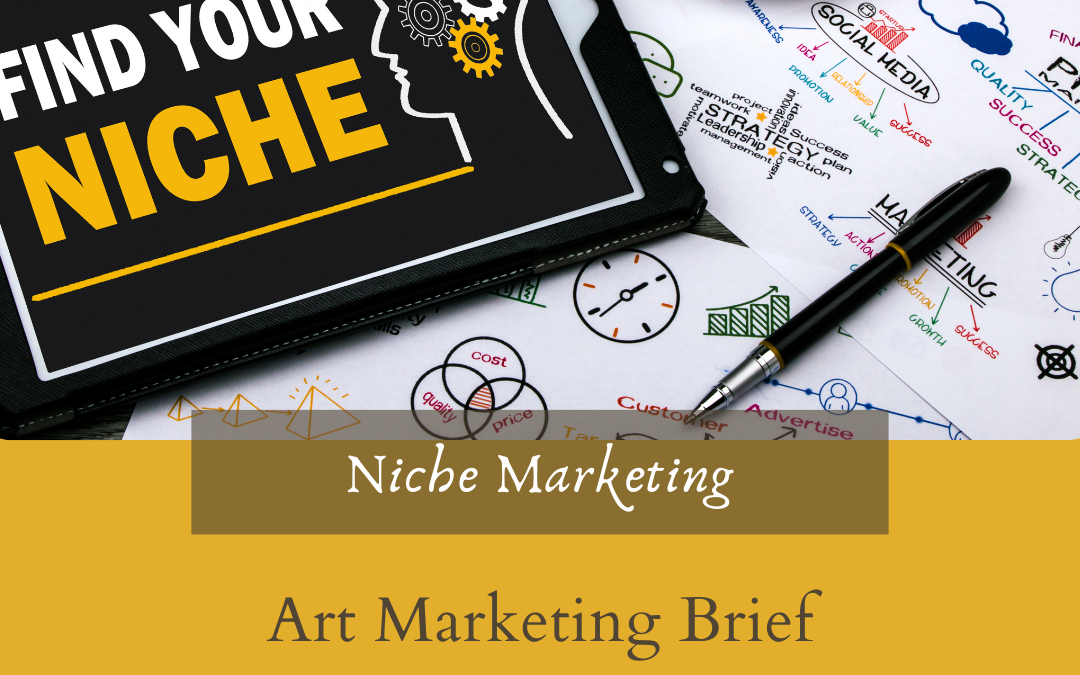
by Rebecca Sciullo | Jan 10, 2024 | Events, Resources
Join Artisan Advantage for a New Program on Marketing Your Artwork to a Niche Audience.
Attend a free virtual short program on marketing your artwork to a niche audience. Art Marketing Briefs are similar to roundtables in that we focus on one subject, but the information will be delivered in a 30 minute presentation followed by Q&A.
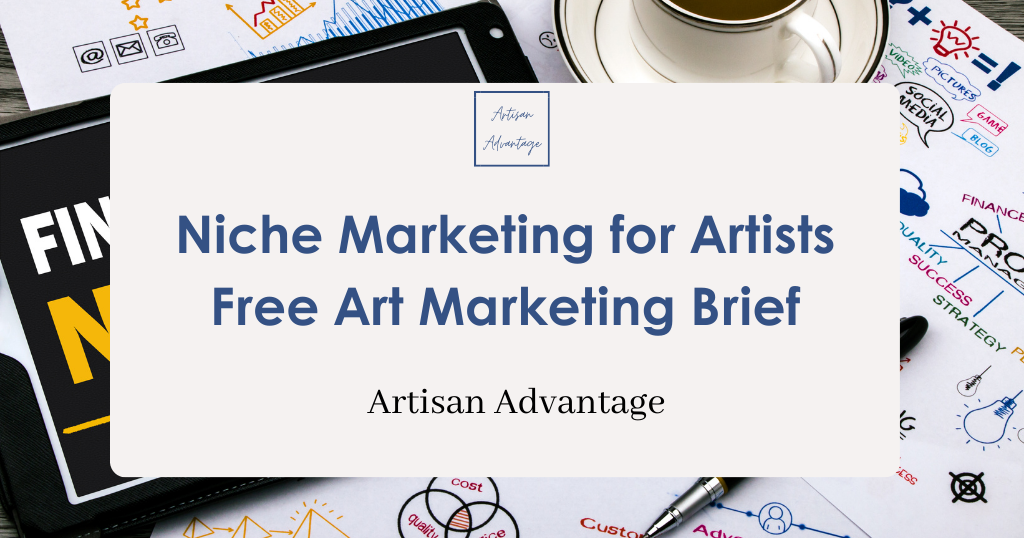
Craft a Niche Marketing Strategy for Your Art Business
Register for this one-hour event, where you’ll learn about finding and harnessing the potential of your unique niche.
Discover how marketing your artwork to a niche market can unlock success in your art business. Gain insights on how to start thinking about niche audiences by leveraging your distinct style, themes, or mediums. Whether you’re a seasoned professional or an emerging artist, this session provides ideas for using a niche strategy in your business.
Secure your spot below.
February 20, 2024
11:00 am EST/8:00 am PST
Register Here
Everyone who signs up will receive a Zoom link to participate live and a follow-up event recording. Take advantage of this opportunity to redefine or enhance your art marketing to a niche market. Reserve your spot today!

by Rebecca Sciullo | Dec 11, 2023 | Channels
Elevating Your Social Media Presence as an Artist
Last week, we posted twelve ideas to use on your artist blog to connect with your audience, showcase your work, and share your artistic journey. Another key part of your marketing system is using social media channels.
Like blogging, you may need some ideas to help with your social media content, especially when getting outside the routine of simply posting images of your work. However, breaking away from the routine of posting artwork images alone can be challenging. Here are some content types and how you might use them in your art business

1 – Short-Form Video
Short-form videos are concise, engaging visual content typically lasting between 15 seconds to a few minutes. Short-form content allows you to share snippets of your work, from quick tutorials demonstrating artistic techniques to time-lapse videos capturing the creation process.
Highlight completed pieces, offer glimpses into your studio routine, or tell the story behind a piece of art.
2 – Long-Form Video
Long-form videos use content with extended durations, often ranging from several minutes to hours. This format offers a deeper dive into your creative process, allowing comprehensive tutorials, in-depth documentaries, or detailed artist talks. Use long-form videos to demonstrate techniques, share personal narratives, or conduct workshops, providing valuable insights and fostering a strong connection with viewers.
3 – User-Generated Content
User-generated content (UGC) refers to any form of content—text, images, videos, reviews—created by your audience rather than you. Encourage followers to share creations inspired by your work or participate in art challenges. Are you a teaching artist? Encourage your followers and students to share their creations inspired by your teaching. Or, ask collectors to post your work hanging in their spaces. Showcase this content on social media profiles or websites, fostering community engagement and collaboration.
4 – Live Stream
A live stream is a real-time broadcast transmitted over the internet, allowing viewers to watch events or content unfold as it happens. Use live streams to interact directly with your audience, showcase your creative process, host Q&A sessions, conduct live art demonstrations, or unveil new work. This medium offers an intimate and immediate connection, enabling you to engage in real-time conversations, receive instant feedback, and cultivate community.
5 – Polls and Questions
Polls and questions are interactive features on social media platforms that engage users by soliciting their opinions or prompting responses. Leverage these tools by seeking input on upcoming projects, asking followers about preferred artistic themes, or conducting polls to determine the next art piece to create. Engaging audiences with questions about their artistic preferences, favorite colors, or styles fosters interaction and helps you tailor content to suit your audience’s interests.
6 – Contests or Giveaways
Use contests or giveaways on social media to boost engagement and expand your audience reach. Encourage user participation by hosting contests or giveaways, such as sharing your content to enter the contest. Offering art pieces or exclusive experiences as prizes incentivizes involvement, fostering a sense of community and appreciation among followers while increasing your online presence and attracting new audiences to their work.
Consistency is Key
These different content types break the monotony of traditional art posts and allow you to establish a deeper connection with your audience.
Remember, the key lies in experimentation and consistency. Discover what resonates best with your audience and refine your approach accordingly. Embrace the versatility of social media platforms to tell your unique story as an artist, and watch as your online presence grows.
Get More Ideas for Your Art Business
Want more ideas and help for your art business? Join the Artisan Advantage weekly information drop here.

